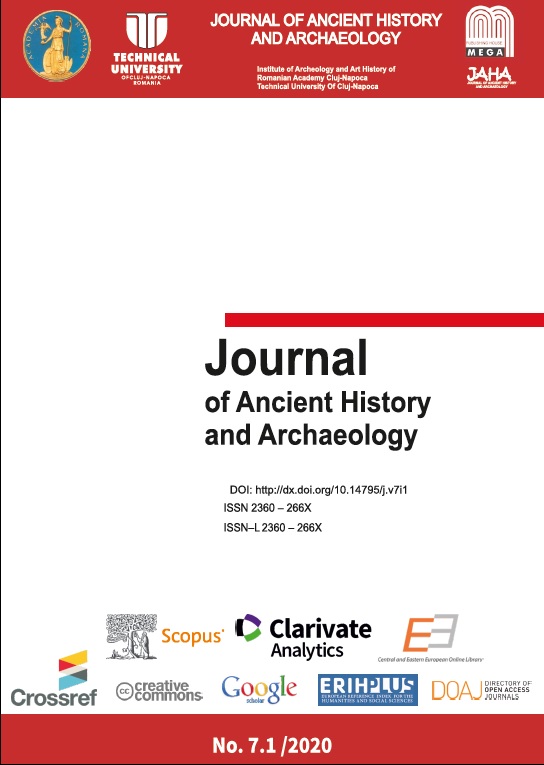THE BRONZE CAULDRON OF PIATRA ȘOIMULUI (CALU) (NEAMȚ COUNTY, ROMANIA). NOTES ON THE DISTRIBUTION, DATING AND USE OF SUCH TYPE CAULDRONS IN THE SARMATIAN ENVIRONMENT
THE BRONZE CAULDRON OF PIATRA ȘOIMULUI (CALU) (NEAMȚ COUNTY, ROMANIA). NOTES ON THE DISTRIBUTION, DATING AND USE OF SUCH TYPE CAULDRONS IN THE SARMATIAN ENVIRONMENT
Author(s): Vitalie BârcăSubject(s): History, Archaeology, Ancient World
Published by: Editura Mega Print SRL
Keywords: the Sarmatians; the Alani; the Daco-Getae; bronze cauldrons; the north and north-west Pontic area; the Don river; the Volga river; burials; chronology; Piatra-Șoimului (Calu);
Summary/Abstract: We shall discuss here the bronze cauldron discovered in 1932 in the perimeter of the Daco-Getae settlement of Piatra Șoimului (Calu). The vessel was dated by R. Vulpe to the 3rd century AD and the 1st century BC by Gh. Bichir. According to its features, the Piatra Șoimului (Calu) cauldron belongs to type VI, variation 1, subvariation A in S. I. Demidenko’s typology. Although the earliest cauldrons of type VI.1.A come from a series of features of the second half of the 2nd century – end of the 1st century BC, they are mainly specific to the mid Sarmatian period, the majority originating in graves dated to the second half of the 1st century – early 2nd century AD. The Piatra Șoimului (Calu) cauldron is the single vessel of the type from the space between the Dnieper and the Carpathians, while the closest parallel is the vessel of Boguslav, a place located to the left of the Dnieper. The remaining cauldrons in type VI (over 60 specimens), come from territories in the Don river basin, the Kuban region and the area of the lower Volga river course. Upon the analysis of the Sarmatian date cauldron finds from Ukraine and the R. of Moldova, the author notes their small number and the fact they belong to types specific to the mid Sarmatian period, representing, together with other item classes, one of the innovations of this period (1st century – mid 2nd century AD). Furthermore, it is mentioned that most come from features and contexts with a marked eastern nature of the period between the second half of the 1st century – first half of the 2nd century AD. Considering that most cauldrons in type Demidenko VI were discovered in territories inhabited by the Alani Aorsi and Siraces and based on the dating of features containing identical cauldrons and the Sarmatians’ entry and settlement of the north and north-west Pontic area, the author concludes that the Piatra Şoimului (Calu) vessel, beside the other cauldrons specific to the mid Sarmatian period from the north and north-west of the Black Sea, reached the east Carpathian area sometime in the second half of the 1st century AD and by no means later than the events by early 2nd century AD.
Journal: Journal of Ancient History and Archaeology
- Issue Year: 7/2020
- Issue No: 1
- Page Range: 79-105
- Page Count: 27
- Language: English

